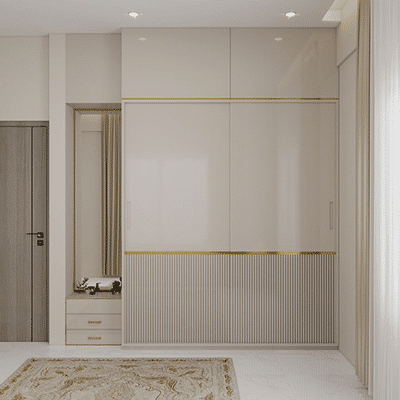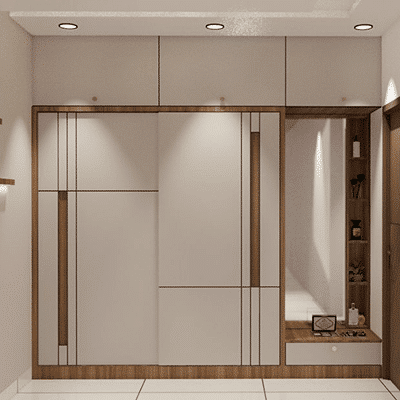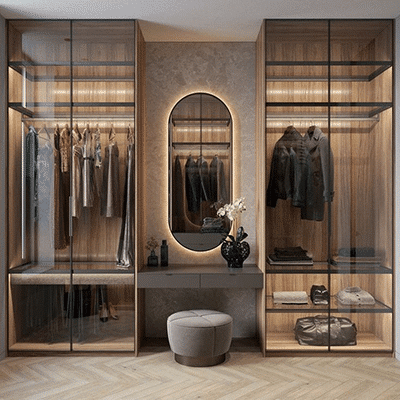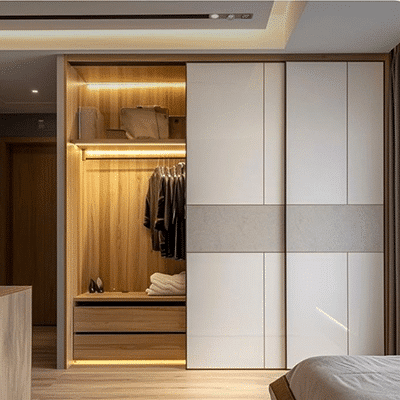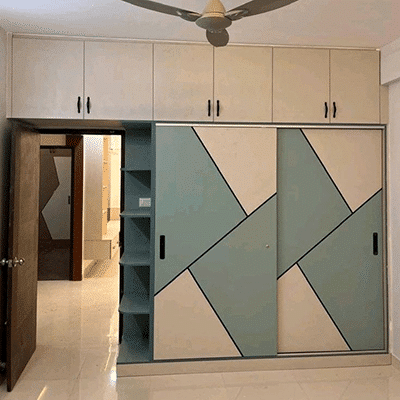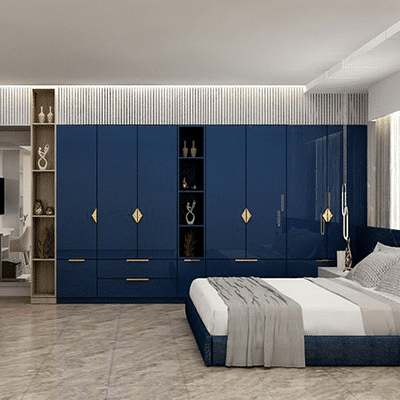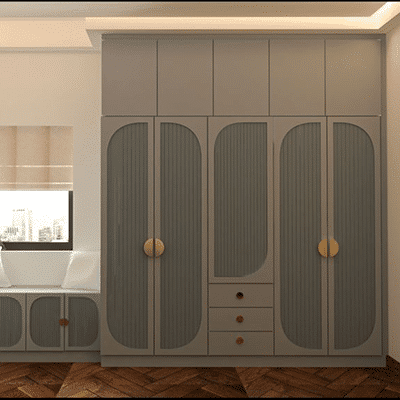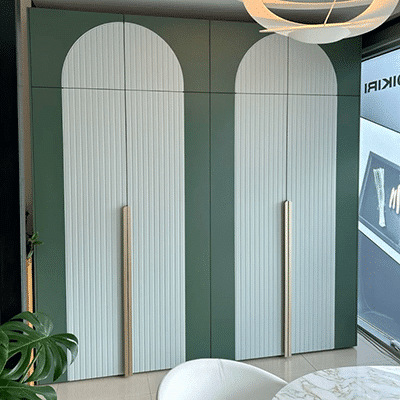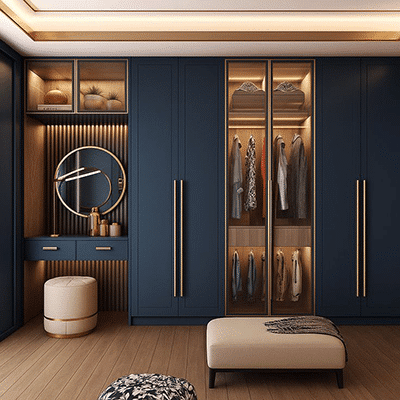Modular Wardrobe Ideas
What is the best wardrobe design for my bedroom?
FAQ About Modular Kitchens Designs
There are many wardrobe options available in stores and online. The best choice depends on the size of your bedroom. For small rooms, go for a compact wardrobe that saves space. If you have a large bedroom, you can choose a bigger wardrobe with double doors and multiple shelves to store more items.
Yes, it’s possible. A walk-in wardrobe gives you a separate space to organise clothes, shoes, and accessories. Even in small rooms, you can create a walk-in by choosing compact designs that don’t take up too much space but still work efficiently.
A closet is usually a small, enclosed space built into the wall of a room. It is fixed and cannot be moved. Closets are common in modern homes and are used to store clothes, shoes, or other essentials in an organised way. A wardrobe, on the other hand, is a large piece of freestanding furniture. You can place it anywhere in the room and even move it around if needed. Wardrobes often come with shelves, hanging space, and drawers, making them more versatile. In short, closets are permanent built-in storage spaces, while wardrobes are movable storage units.
Yes, an almirah is basically the same as a wardrobe. In India, Pakistan, and other South Asian countries, the word “almirah” is used for a freestanding cabinet used to store clothes and personal items. Like a wardrobe, an almirah can be made of wood, metal, or plastic and comes in different sizes—from small and compact to large and spacious.
The cost of modular wardrobes depends on the materials and design. Wardrobes made from cheaper materials like particle board or engineered wood cost less, while those made from solid wood or premium veneers are more expensive. Fully custom-made wardrobes also cost more than ready-made ones because they require extra materials and labour.
Types of Wardrobes in India
There are several types of wardrobes to choose from, depending on your room size and needs:
- Sliding Wardrobes: Save space and look modern, perfect for small rooms.
- Hinged Wardrobes: Traditional style with doors that open fully, easy to access.
- Walk-in Wardrobes: Large storage spaces, usually found in bigger or premium homes.
- Corner Wardrobes: Designed to fit L-shaped corners and make the most of space.
- Open Wardrobes: Stylish and modern, ideal for studios or minimalist setups.
Each type has its own benefits and works best in different room layouts.
Sliding wardrobes are great for small bedrooms because they save space and give a modern look. Hinged wardrobes are better for bigger rooms since the doors open fully, giving easy access inside. Sliding doors need strong tracks and may not work well with heavy handles. Hinged doors, while classic, need extra space to open. Pick the type that fits your room size and how often you use it.
In Indian homes, a wardrobe is usually 6–8 feet tall and 2–3 feet deep. The width can range from 4–7 feet depending on the space in your room. Custom wardrobes often use the full wall height and include loft storage. For a couple, a 3-door or 4-door wardrobe with shelves and organizers inside is usually enough.
To save space in a compact room, use sliding wardrobes, loft storage, and multi-level shelves. Include pull-out drawers, racks for sarees and ties, and vertical dividers to stay organized. Floor-to-ceiling wardrobes make full use of height, and mirrored or light-coloured doors can make the room feel bigger. Modular wardrobes designed for Indian clothes like kurtas and sarees work best in small rooms.
In 2025, popular wardrobe trends in India include handleless designs, matte or glass doors, mirrored panels, and dual-tone finishes. Inside, people are using custom organizers, pull-out trays, and modular compartments for Indian clothes. Wood textures, fluted panels, and neutral colours like taupe, mocha, and white are also very popular for both sliding and hinged wardrobes.
For Indian homes, laminated plywood is strong, durable, and affordable. Acrylic and glass doors give a modern look, while PVC is cheap and moisture-resistant. Membrane-finish MDF looks smooth and seamless but needs extra care in humid areas. For premium wardrobes, lacquered glass or PU-coated doors are popular in urban homes.
Yes, mirrored wardrobe doors are great for small bedrooms because they make the room look bigger and brighter. They also save space since you don’t need a separate dressing mirror. Full-length sliding mirrors give a modern, sleek look. However, they need regular cleaning and may not be ideal for homes with young children because of the risk of breakage.
For Indian wardrobes,plywood is the best choice because it is strong, water-resistant, and lasts long. MDF is smooth and good for painted or membrane finishes but doesn’t do well in humid areas. Particle board is the cheapest but weak, suitable only for temporary or rental setups. For long-term use, laminated plywood with edge banding is the most reliable option.
For kids’ wardrobes, use low hanging rods, open shelves, and drawers that are easy for them to reach. Add bright colours, fun handles, or even chalkboard doors to make it playful. Make safety a priority with rounded corners and soft-close doors. Adjustable shelves are helpful as kids grow. You can also combine storage for clothes, toys, and school supplies in one modular unit.
Sliding wardrobes with mirrored doors save space and brighten the room. Use modular interiors with drawers, dividers, and overhead storage. Wall-to-wall or floor-to-ceiling designs maximize space efficiently.Combine it with an open bookshelf or study unit for dual-purpose use. Wall-to-wall or floor-to-ceiling wardrobes help maximise utility without clutter.
